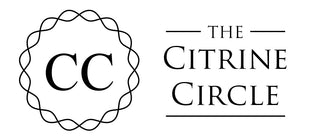Genuine Fire Agate is gorgeous, rare and expensive, and in the last few years there have been a lot of crystals on the market claiming to be Fire Agate. So how do you know what's real and what's mislabelled?
Once you see a piece of genuine Fire Agate, it becomes very easy to tell the difference from the Carnelian often sold as Fire Agate - if you look on Etsy over half the results on a Fire Agate search will bring up mislabelled Carnelian in various forms.
This is what genuine Fire Agate looks like:


Real Fire Agate can be found in the southwestern USA in California/Arizona, and Mexico. It is technically a Chalcedony rather than an Agate as well, as it is not banded as Agates technically should be, but the name has stuck! The rainbow colours are created from many layers on top of each other that let light in which then diffracts. Fire Agates are usually found as bubbly rainbow masses with incredible rainbow shimmer when polished.
If you google Fire Agate, you will get a lot of results that look like these:




Many of these will be Carnelian that has been heat treated to give it the crackle effect, in a similar way to crackle quartz. It also goes by various other names, such as Snakeskin Carnelian, Fire Carnelian, and Snakeskin Fire Agate. These are much cheaper than true Fire Agate, which is usually sold as Cabochons due to the small nature of the pieces.
Seeing the two side by side, it is much easier to tell the difference - the heated Carnelian will be in varying shades of red/orange/yellow with no iridescence, whereas true Fire Agate will display various shades of iridescent colours - most commonly reds, but also rare shades of greens, blues and purples!


Donna Forbes
Really good to know this, thank you. It explains why the Fire Agate heart I bought doesn’t seem to have any ‘fire’ in it! However, there is a large white patch which glows nicely under a UV light. I thought that might be it but I guess this is a Calcite inclusion.
Taylor Bavier
I’ve gone a lifetime misinformed, I’ve swam the Colorado river (California/Arizona border) my whole life picking up beautiful amber rocks that, when held up to the sun they’ll glow almost see through. Now I know this isn’t real fire agate I’ll have to be the bearer of bad news. A staple of my childhood was and still is going for a swim later in the afternoon when the sun sets to catch the glow of these rocks for the hunt. Not that this put a damper on my/mines outdoor activities, just another case of “mama said, so must be” this right here is absolutely why I love the Internet. A tool at my disposal given to me for basically free, a tool that if utilitized in a specifically manner will allow me to break generational molds put in place by an outdated lack of a system. I have also found a lot of other crystals or gems out where I live. I do live about 20 mins from Quartzite currently and grew up all along the Colorado River my whole life.
Gina
Absolutely gorgeous the real fire agate so good to know the real from the fake.Thank you for that information.
Luv
Wow oh wow! Thanks for your hard work and sharing this information. This is so helpful!
Myneth Porciuncula
Very helpful information! Thank you